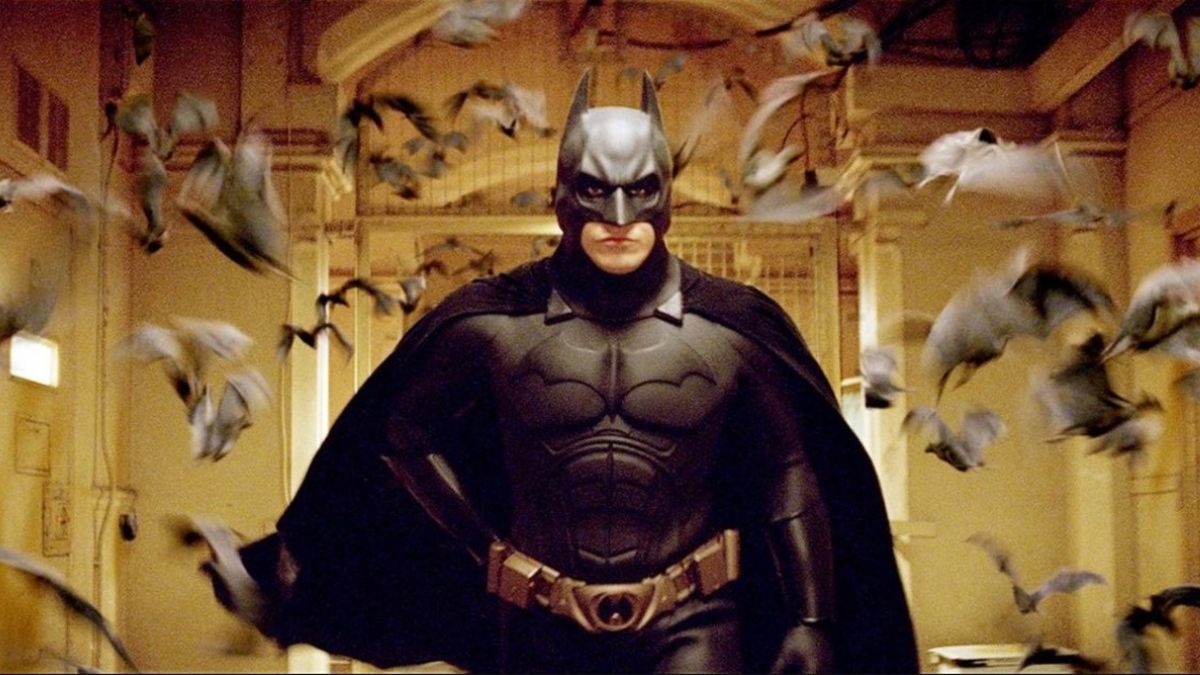'Batman Begins' at 20: Revisiting Christopher Nolan's benchmark-setting superhero reboot

In the world of comic book superheroes, there are two legends that stand above the rest - Batman and Superman, both created under the banner of Detective Comics (DC), both debuting during the “Golden Age” of comic books. Even now, almost 90 years later, these characters stand the test of time. While Superman embodies hope, peace, idealism and near-invincibility, the Dark Knight embodies darker, grittier themes like vigilantism, personal trauma, vengeance and the relentless quest for justice.
The Caped Crusader has spawned a wide variety of media, with several movies made, each by different people, of different genres and during different time periods. Among these none have left a bigger mark than Christopher Nolan’s Dark Knight Trilogy. With today being the 20th anniversary of the release of the first reboot, Batman Begins, let’s take a look at what made the movie and the trilogy it launched so special.
A franchise in decline
Over the years, there have been 23 films with the character, with several actors portraying the role of the iconic hero. However, not all of them were commercial or critical hits, with the end of the 20th century being a particularly bad time for the franchise, with the flop of the 1997 entry Batman and Robin (considered one of the worst films ever made), ultimately leading to the cancellation of its sequel "Batman Unchained".
Between 1998 and 2003, the studio aimed at rebooting the series, hiring Nolan in January 2003 to direct the new film, with David S Goyer writing the screenplay. Nolan and Goyer envisioned to make a darker, more realistic version of Batman, stripping him of the campiness present in previous films. They looked to comic book storylines such as "Batman: Year One", "The Man Who Falls", and "Batman: Long Halloween" as inspirations.
A new vision
Goyer and Nolan created a version of Batman, not seen before on film. Long gone were the comically dark streets of Gotham, which according to the production designer of the 1989 Tim Burton Batman movie was as if “hell had burst through the pavement and kept on growing.”Nolan sought to create a more “relatable” version of the city, aiming to create a more ordinary version of the city, with extraordinary things happening within it. He said, “I wanted an interpretation of that character that presented an extraordinary figure in an ordinary world… the more tactile and layering that we could get into this film… If I can believe in that world because I recognise it… then when this extraordinary figure of Batman comes swooping down… that’s going to be more exciting to me.”
Layers to the characters
The films also establish Batman’s role as a symbol and delves into both sides of the character, Batman/Bruce Wayne, something seldom done in the previous movies. It explored Wayne as a character, not just a mask. Christian Bale, who played the Dark Knight, delivered a layered performance. A depiction of a broken, vengeful heir who transforms into a ruthless yet determined guardian of justice. Even the villains were carefully planned. For the first movie, Nolan didn’t want characters already recently used in previous movies, such as Joker, Mr Freeze and Penguin. Goyer suggested characters such as Calender Man (murdering victims in a holiday theme), Clayface, Killer Croc and Mad Hatter, but Nolan rejected them as they didn’t align with his vision. They finally decided on Ra’s al Ghul and Scarecrow, played by Liam Neeson and Cillian Murphy, respectively. Both differed largely from the cartoonish, whimsical villains of the past Batman films and instead had their own moral viewpoints and philosophical ideologies which differed from Batman’s and were not just “evil for the sake of being evil” making them a formidable match for the hero.
Launchpad for legends
While making the films, the cast and crew had no idea of the sensation the franchise would grow into (and also how much the next film, The Dark Knight, would overshadow this one, mainly due to Heath Ledger’s phenomenal performance as Joker). Back then, Nolan was nowhere near the world-renowned filmmaker he is today. This movie elevated his status to a high-profile director. Similarly, it established Christian Bale, who played Batman, as a leading man, and also introduced Cillian Murphy to the masses, who was relatively unknown back then.
Lasting legacy
The film inspired several comic book movies that came after, with more recent superhero films, particularly from the DCEU such as The Batman and Man of Steel and even some films in the MCU such as the Captain America trilogy — also depicting a more grounded universe. One of the key details which possibly made the film so appealing is Nolan’s effort to use a practical approach for stunts and action sequences, something he still does and is popular for. All the films in the trilogy use very little CGI (Computer Generated Imagery) and instead rely on practical models and effects such as the Tumbler (the film’s version of the Batmobile) was a fully functional vehicle that could jump 30 feet and hit sixty mph in 5 seconds. Several scenes in the movie such as the Arkham Asylum breakout and Scarecrow’s hallucinations were also achieved using practical effects.
Batman Begins was the dawn of a new era not just for the iconic character but also for superhero movies. Despite it not being the first superhero movie to explore darker themes (as seen in movies like Blade, The Crow, etc), the movie did however elevate the genre and set a new benchmark for what films could be—philosophical, intense, and emotionally resonant!
Entertainment